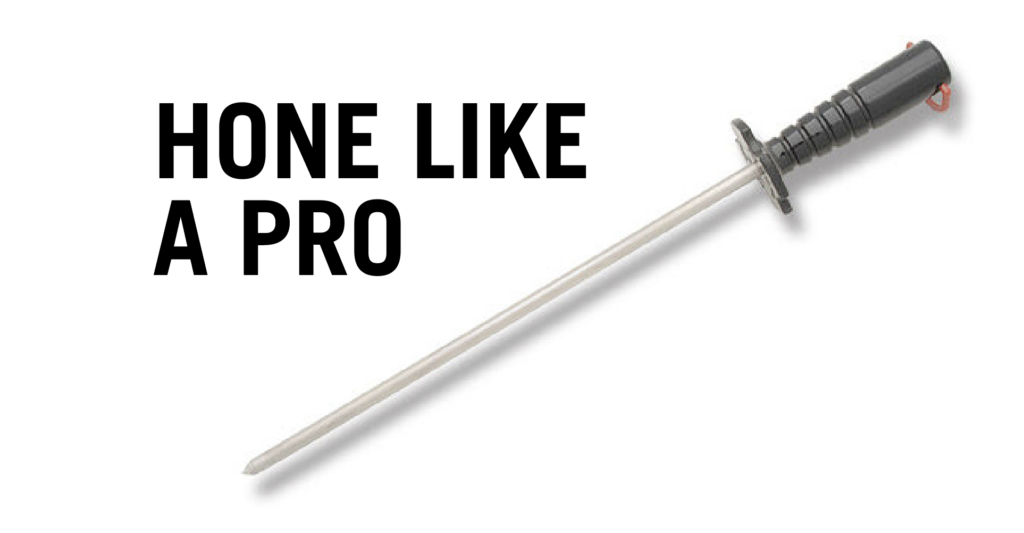For starters, honing a knife is different from sharpening a knife in one major way: how much steel is removed from the blade. Sharpening involves removing steel along the edge using an abrasive. It’s more aggressive than honing, which is a process by which the grains of steel on the edge are made uniform.
While honing isn’t a replacement for sharpening, it can extend the time between sharpenings. Honing is also a quick way to refresh a blade before use. Professional chefs will often use honing rods on their knives before getting to work.
You don’t need to be a five-star chef to hone your knives like a pro, though. No matter the task at hand, you can bring your knife back to life quickly with these simple steps.
Step 1: Buy A Honing Rod
In general, honing rods come in three styles: steel, ceramic and diamond. Each comes with different characteristics.
Steel is the least expensive. Because it’s softer than the other two styles, it won’t remove much metal from the blade. It’s great for beginners.
Ceramic carries more bite than steel. The honing will last longer because of this, but ceramic is also less forgiving of the novice.
Diamond honing rods are usually the most expensive of the three. The diamonds embedded in the rod remove a good amount of steel, so this style should only be used by the skilled knife enthusiast.
No matter which style you choose, aim for these features:
- A secure, ergonomic grip
- A sturdy guard that protects your hand
- A ring on the handle for slipping a pinky through in case you drop it
Step 2: Find Your Angle
Place the rod perpendicular onto a non-slip surface. Hold the handle of the rod and plant the tip onto a soft yet durable surface, like a cutting board. Place the heel of the knife against the top of the rod at an approximate 15-20 degree angle. It’s important to match the angle of the edge already set on the blade.
If you’re not sure of the degree, angle the edge against the rod almost like you’re going to cut a long, thin slice of the rod off, and then apply light downward pressure until the edge catches.
Step 3: Time to Hone
Using light pressure, draw the knife down the rod. Use the full length of the rod (you paid to use the whole thing) and pull across the full length of the blade (you paid for that, too). Do your best to maintain a constant angle. Do the same for the other side of the blade.
Repeat eight to 12 passes on each side of the blade. Take your time. There’s no need to show off by honing quickly. That comes later.
With practice, honing will be like second nature to you. Honing will put your knives into a whole new light. You’ll be amazed at how quickly you can give your blade a new pair of shoes.
Looking For a Shortcut? Try Knife Aid
The next best thing to sharpening and honing on your own is to use a mail-in knife sharpening service, like Knife Aid.
Knife Aid makes it simple. After placing your order, Knife Aid sends you everything you need to send them your knives for sharpening. It’s as easy as dropping your order in the mail, waiting a little bit and receiving the knives back in the mail as good as new. You can read BLADE‘s review of Knife Aid here.
Want to try it for yourself? Head to Knife Aid’s website and get started.
P.S. BLADE gets a percentage of every sale referred to Knife Aid, but that shouldn’t deter you from giving the service a try. Read our review here.
BLADE’s annual Knife Guide Issue features the newest knives and sharpeners, plus knife and axe reviews, knife sheaths, kit knives and a Knife Industry Directory.Get your FREE digital PDF instant download of the annual Knife Guide. No, really! We will email it to you right now when you subscribe to the BLADE email newsletter.
Click Here to Subscribe and get your free digital 2022 Knife Guide!
